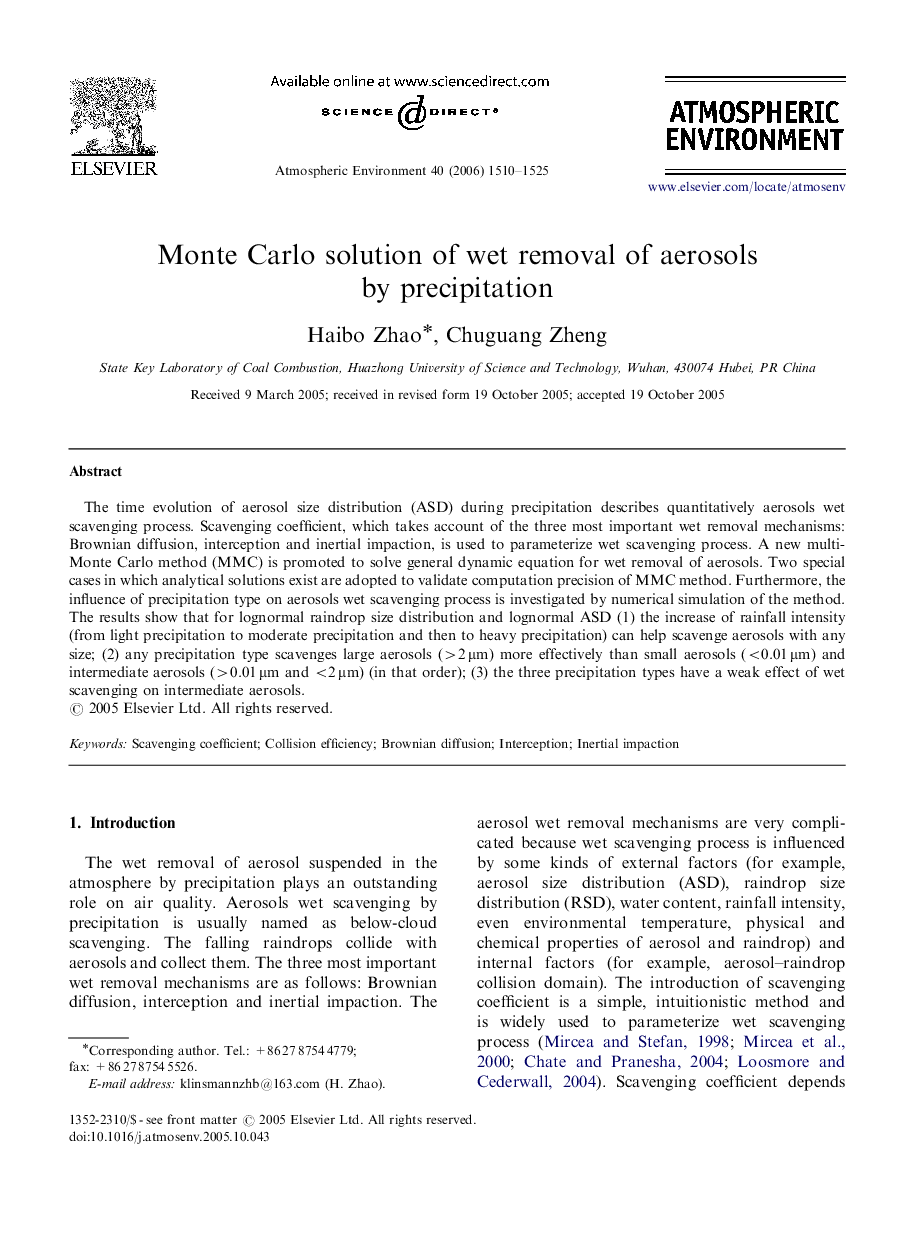| Article ID | Journal | Published Year | Pages | File Type |
|---|---|---|---|---|
| 4444655 | Atmospheric Environment | 2006 | 16 Pages |
The time evolution of aerosol size distribution (ASD) during precipitation describes quantitatively aerosols wet scavenging process. Scavenging coefficient, which takes account of the three most important wet removal mechanisms: Brownian diffusion, interception and inertial impaction, is used to parameterize wet scavenging process. A new multi-Monte Carlo method (MMC) is promoted to solve general dynamic equation for wet removal of aerosols. Two special cases in which analytical solutions exist are adopted to validate computation precision of MMC method. Furthermore, the influence of precipitation type on aerosols wet scavenging process is investigated by numerical simulation of the method. The results show that for lognormal raindrop size distribution and lognormal ASD (1) the increase of rainfall intensity (from light precipitation to moderate precipitation and then to heavy precipitation) can help scavenge aerosols with any size; (2) any precipitation type scavenges large aerosols (>2 μm) more effectively than small aerosols (<0.01 μm) and intermediate aerosols (>0.01 μm and <2 μm) (in that order); (3) the three precipitation types have a weak effect of wet scavenging on intermediate aerosols.
